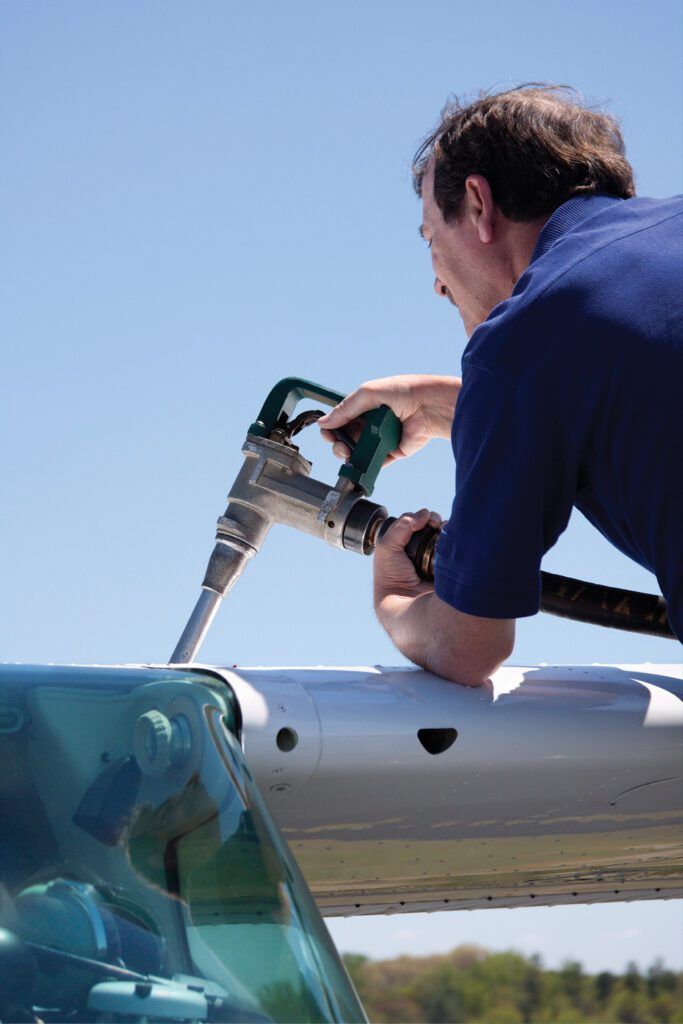After several relaxing days, I finally was able to strap on my Cardinal RG and head home. I’d had an enjoyable family holiday, but it was time to face the music and be back at the office the next morning. Only I was 450 miles from home, with the destination weather forecast to get gnarlier as the day went on. Even with the stiff headwinds, I had enough fuel to make it a non-stop. Sort of. As it turned out, I should have stopped for gas before the weather worsened.
 The first hundred or so miles had me cruising among at least three stratus layers, all of them broken. I could intermittently see blue sky above and terrain below. My fuel computer told me I had adequate reserves at my destination, given the headwind. Just.
The first hundred or so miles had me cruising among at least three stratus layers, all of them broken. I could intermittently see blue sky above and terrain below. My fuel computer told me I had adequate reserves at my destination, given the headwind. Just.
I have a personal rule that says I’ll land with no less than 1.5 hours of fuel, and I was going to be pushing that if I didn’t stop. By then, though, every potential fuel stop had gone IFR, some below minimums. Which meant shooting an approach, perhaps missing it and then using up even more of my fuel.
I kept going. The weather was holding at my VFR-only destination and there are several airports nearby, with many approach options. I was confident I could duck into one of them to top off before a short hop to the airplane’s base. But the closer I got, the less likely were the odds of getting into that VFR-only airport. Airports that were reporting 10-plus miles and 10,000-foot ceilings were either lying or hadn’t caught up. Complicating things further was nightfall. I had planned to be on the ground by sundown, but thanks to delays and stiffer headwinds, it wasn’t going to happen. Since the runway lights at the airplane’s home base aren’t the best, just finding it was going to be a challenge. At this point, I’d have to shoot an approach to get into most area airports, and had no guarantee I could get into the plane’s home base.
I cancelled IFR, got low over familiar terrain and made a beeline for home. With ATC’s help, I dodged a couple of tall towers and was soon verifying certain landmarks close to the field. I finally spotted the runway lights. By this time, at 1500 feet agl, I was clearly scud-running on minimum fuel. The landing was uneventful.
Next time, I won’t push the fuel as close, or I’ll duck in somewhere else and rent a car. Or stay on the ground.
Have you encountered a situation or hazardous condition that yielded lessons on how to better manage the risks involved in flying? Do you have an experience to share with Aviation Safety’s readers about an occasion that taught you something significant about ways to conduct safer flight operations? If so, we want to hear about it.
We encourage you to submit a brief (500 words) write-up of your Learning Experience to Aviation Safety for possible publication. Each month, Aviation Safety publishes a collection of similar experiences sent to us by readers. Sharing with others the benefit of your experience and the lessons you learned can be an invaluable aid to other pilots.
You can send your account directly to the editor by e-mailing it to [email protected]. Put “Learning Experience Submission” in the subject line; add your name and daytime telephone number at the bottom of the e-mail.
Your report will be considered for publication in the Aviation Safety’s readers’ forum, “Learning Experiences,” and may be edited for style and length. Anonymity is guaranteed if you want it. No one but Aviation Safety’s editor is permitted access to the reports. Your name and telephone number are requested only so that the editor can contact you, if necessary.
While we can’t guarantee your submission will get published, we can guarantee that we’ll closely review and consider using it.
All Learning Experiences submissions become the property of Aviation Safety and may be republished.



